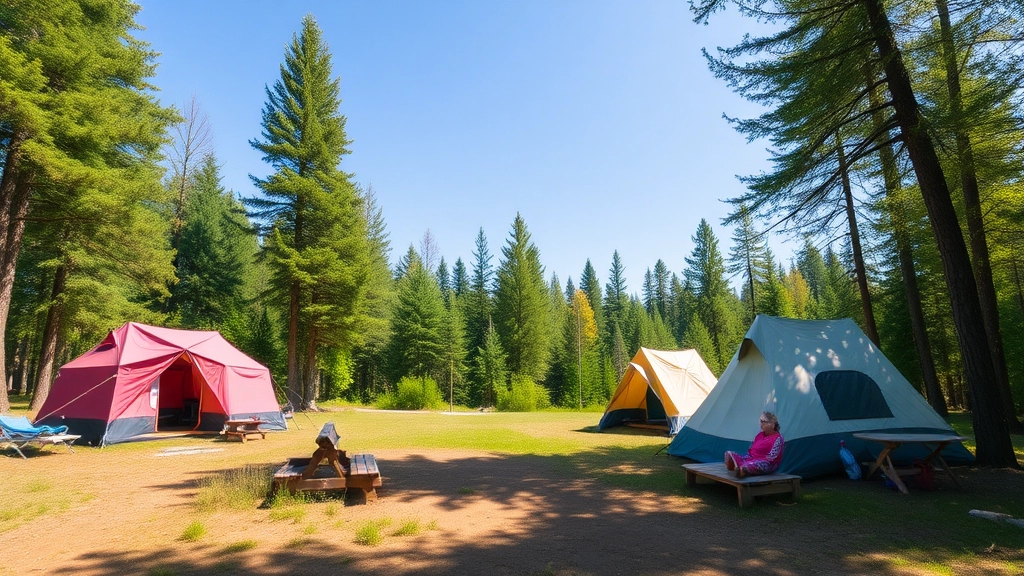Welcome to Wooded Area Summer Camps
Imagine a summer camp where the chirping of birds and rustling of leaves replace the buzz of city life. Welcome to the world of Wooded Area Summer Camps! This article delves into everything you need to know about creating an unforgettable summer camp experience in nature’s playground. From choosing the perfect location to understanding the environmental impact, we’ve got you covered.
What to Expect
We’ll explore the benefits of hosting a camp in a wooded area, essential amenities, popular activities, and crucial safety tips. You’ll also find insights into budgeting, marketing strategies, and real-life case studies of successful camps. With testimonials from campers and parents, this guide aims to provide a comprehensive roadmap for anyone looking to embark on this exciting journey.
Let’s Dive In!
Let’s dive in and make your summer camp dreams a reality!
Choosing the Perfect Wooded Area for a Summer Camp
Alright, let’s dive into something that’s got a lot of folks scratching their headsâchoosing the perfect wooded area for a summer camp. You might be wondering, “How do I pick the right spot?” or “What should I look out for?” Let’s break it down.
Why a Wooded Area?
First off, why even bother with a wooded area? Simple. Nature’s playground offers a unique vibe that you just can’t get anywhere else. The trees, the fresh air, the wildlifeâit’s a game-changer for kids and adults alike.
Key Considerations
When you’re scouting for that ideal location, keep these in mind:
- Accessibility: How easy is it to get there? You don’t want a spot that’s a nightmare to reach.
- Safety: Check for any potential hazards. Are there dangerous wildlife or unstable trees?
- Size: Make sure there’s enough space for all your planned activities and facilities.
- Water Source: Is there a lake or stream nearby? Water activities are a must-have for summer camps.
- Permissions: Ensure you have the right permits. No one wants a surprise visit from the authorities.
Real-Life Example
Take the story of Camp Oakwood. They found a spot that was off the beaten path but still accessible. They had a lake for canoeing and plenty of trees for shade. This balance made them a hit with campers and parents alike.
Checklist for the Perfect Spot
Here’s a quick checklist to make your search easier:
- Location: Close enough for convenience but far enough for a retreat feel.
- Terrain: Flat areas for tents and activities.
- Facilities: Nearby restrooms or space to build them.
- Connectivity: Some camps need a digital detox; others might require Wi-Fi. Decide what’s right for you.
For more ideas on how to make your summer camp experience unforgettable, check out our guide on fun activities for kids and explore some exciting summer camp activities.
Benefits of Hosting a Summer Camp in a Wooded Area
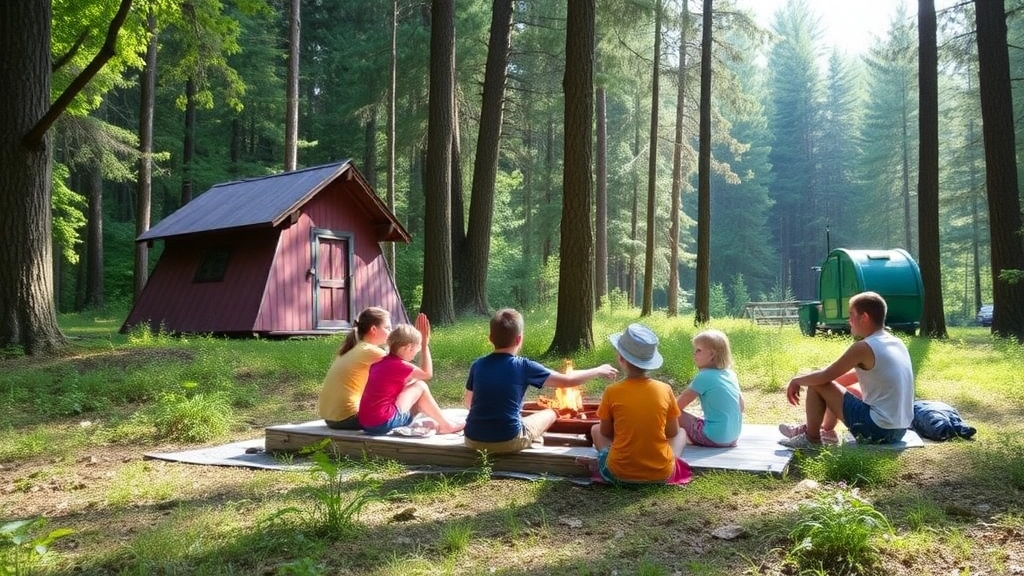
Ever wondered why a summer camp in a wooded area is such a hit?
Let’s dive into it.
Why Wooded Areas Rock for Summer Camps
First off, nature’s playground.
Kids are cooped up all year, staring at screens.
A wooded area offers a break from that.
It’s like giving them a real-life adventure.
Fresh air and freedom.
These spaces are full of oxygen, and guess what?
It’s free.
No city smog, just pure, fresh air.
And the freedom to explore?
Priceless.
Learning in the Wild
Kids learn differently out here.
They pick up survival skills, teamwork, and a love for nature.
It’s not just about fun; it’s about growth.
Mental Health Boost
Studies show nature reduces stress.
So, it’s not just a camp; it’s therapy.
A mental reset for the kids.
Community and Connection
In the woods, kids make real connections.
No phones, no distractions.
Just pure, human interaction.
Real-Life Example
Remember that camp where kids built their own shelters?
They learnt resilience and teamwork.
That’s the magic of a wooded area.
Quick Recap
- Natural Playground: Endless exploration
- Fresh Air: Healthier environment
- Learning: Practical skills
- Mental Health: Stress relief
- Connection: Building friendships
Essential Amenities for Wooded Area Summer Camps
Alright, let’s get real. If you’re thinking about setting up a summer camp in a wooded area, you’re probably asking, “What do I absolutely need to make this work?” Great question. You want to create an unforgettable experience without missing the essentials. So, let’s break it down.
Basic Necessities: The Non-Negotiables
First off, let’s talk about the basics. These are the things you can’t skimp on if you want your camp to be a hit:
- Shelter: Whether it’s cabins, tents, or yurts, you need to provide a safe and comfortable place for campers to sleep. Make sure they’re weatherproof and can handle the elements. For more on building features, check out our Top Features of Summer Camp Buildings.
- Restrooms: Don’t underestimate the importance of clean and accessible restrooms. Portable toilets can work, but permanent facilities are a huge plus.
- Water Supply: Access to clean drinking water is crucial. Consider installing water stations throughout the camp.
- Food Preparation and Dining Areas: A central kitchen or a series of smaller cooking stations can make meal prep easier. Picnic tables or a dining hall are a must for communal eating. Explore some Summer Camp Meal Ideas to keep everyone happy.
- First Aid: A well-stocked first aid station with trained staff is non-negotiable. Safety first, always.
Comfort and Convenience: The Nice-to-Haves
Now, let’s talk about the extras that can elevate your camp from good to great:
- Electricity: While a true wilderness experience is appealing, having some power sources can be a game-changer for lighting, charging devices, and running essential equipment.
- Showers: Hot showers can make a huge difference, especially for longer camps. Trust me, parents will thank you.
- Laundry Facilities: A simple washing station can be incredibly handy, especially for longer stays.
Fun and Functional: Enhancing the Experience
Here’s where you can really make your camp stand out. Think about amenities that add value and fun:
- Activity Areas: Designate spaces for sports, arts and crafts, and other group activities. A campfire circle is a must for those evening stories and songs.
- Nature Trails: Clearly marked trails for hiking and exploring can offer a safe way for campers to enjoy the natural surroundings.
- Water Activities: If you’re near a lake or river, think about adding kayaks, canoes, or fishing gear. Safety gear like life jackets should be readily available.
Real Talk: What Campers and Parents Really Want
I’ve seen camps thrive and I’ve seen camps flop. The ones that thrive are those that pay attention to the little things that make a big difference:
Popular Activities for Wooded Area Summer Camps
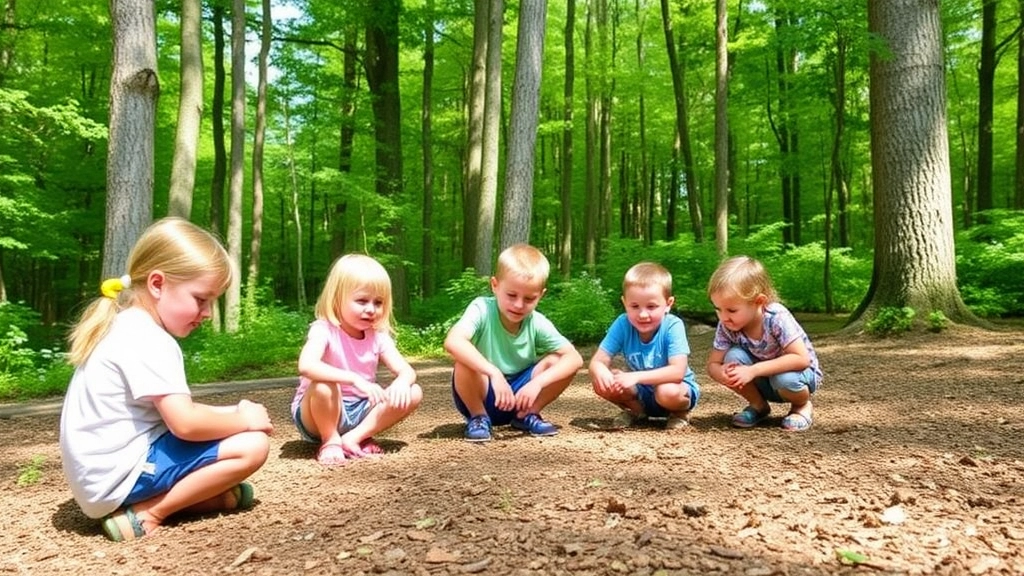
Alright, let’s dive into the good stuff.
What can kids actually do at a wooded area summer camp?
We all know the usual concerns: “Will my child be bored?” or “Is it safe?”
Let’s clear that up.
Hiking Adventures
First off, hiking.
Kids love it.
It’s not just a walk in the woods.
It’s an exploration.
They get to see nature up close.
Wildlife, plants, streams.
It’s like a live-action nature documentary.
Campfire Stories and Songs
Next up, campfires.
Nothing beats sitting around a fire.
Roasting marshmallows.
Telling ghost stories.
Singing songs.
It’s classic.
And it never gets old.
Outdoor Skills Workshops
Then there’s the cool stuff.
Learning survival skills.
Building shelters.
Starting a fire with sticks.
It’s like being a mini Bear Grylls.
Nature Crafts
Got some creative kids?
Nature crafts are a hit.
Using leaves, sticks, and stones to make art.
It’s fun and it gets them thinking outside the box.
Team Sports and Games
Let’s not forget sports.
Capture the flag.
Tug of war.
Even just a game of tag.
It’s all about teamwork and fun.
Water Activities
If there’s a lake or river nearby, even better.
Swimming.
Canoeing.
Fishing.
Kids love water.
And it’s a great way to cool off.
Wildlife Observation
Ever seen a kid’s face light up when they spot a deer?
Or a bird they’ve never seen before?
That’s what wildlife observation does.
It’s educational and thrilling.
Scavenger Hunts
Scavenger hunts are a blast.
Kids get a list of items to find.
They explore the woods.
It’s a game and an adventure rolled into one.
Star Gazing
When the sun goes down, the fun doesn’t stop.
Star gazing is magical.
Kids learn about constellations.
And they get to see the night sky in all its glory.
Story Time and Quiet Moments
And sometimes, it’s about slowing down.
Reading a book under a tree.
Or just sitting quietly, listening to the sounds of the forest.
It’s peaceful.
And kids need that too.
Keep It Real, Keep It Fresh
So there you have it.
A bunch of activities that keep kids engaged and excited.
No boredom here.
Just pure fun and learning.
And the best part?
They get to do all this in a beautiful, natural setting.
That’s what makes a wooded area summer camp special.
If you want more tips on running a successful camp, check out our section on Essential Amenities for Wooded Area Summer Camps.
Or if you’re worried about safety, we’ve got you covered in Safety Tips for Wooded Area Summer Camps.
Bottom line?
Wooded area summer camps rock.
Safety Tips for Wooded Area Summer Camps
Alright, let’s dive into it. You’re probably wondering, “How do I keep everyone safe at a summer camp in the woods?” It’s a legit concern. Nobody wants to deal with accidents, lost campers, or worse. So, here’s a no-nonsense guide to keeping your camp safe and fun.
Understanding the Risks
First off, let’s talk about the common risks. Think about things like:
- Wildlife encounters: Bears, snakes, and other critters.
- Weather changes: Sudden storms or extreme heat.
- Injuries: Cuts, sprains, or worse.
- Getting lost: It’s a big forest, after all.
Wildlife Encounters: Keep It Safe
Wildlife can be a big worry. Here’s how to handle it:
- Educate the campers: Teach them about the local wildlife and what to do if they encounter an animal.
- Secure food: Keep food stored away from sleeping areas to avoid attracting animals.
- Use designated trails: Stick to marked paths to reduce the risk of stumbling upon wildlife.
Weather Changes: Be Prepared
Weather can flip on a dime. Here’s how to stay ahead:
- Check forecasts: Regularly update yourself on the weather.
- Emergency shelter: Have a plan for sudden storms or extreme weather.
- Hydration stations: Ensure there are plenty of water points to prevent heatstroke.
Injury Prevention: Stay Sharp
Accidents happen, but you can minimise them:
- First aid kits: Have them accessible at all times.
- Trained staff: Make sure your team knows basic first aid.
- Safety gear: Helmets, life jackets, and other gear should be mandatory for certain activities.
Avoiding Getting Lost: Stay Found
No one wants a missing camper. Here’s how to keep track:
- Buddy system: Pair up campers so they always have someone with them.
- Regular headcounts: Do these before and after activities.
- Maps and compasses: Teach kids basic navigation skills.
Real Stories, Real Lessons
Let me share a quick story. Last summer, we had a camper who wandered off the trail. Thanks to our buddy system and quick headcount, we noticed immediately and found him within 20 minutes. It was a wake-up call, reminding us that even the best-laid plans need constant vigilance.
Quick Safety Checklist
Here’s a quick rundown to keep everyone safe:
- Wildlife education: Know the animals, know the risks.
- Weather readiness: Always have a plan B.
- First aid: Kits and trained staff are non-negotiable.
- Buddy system: No one goes anywhere alone.
- Regular headcounts: Keep track of everyone, always.
For more tips on keeping campers engaged and safe, check out our guide to fun and educational summer camp activities. Additionally, if you’re looking for creative ways to enhance your camp’s environment, our creative summer camp sign ideas might be just what you need.
Environmental Impact and Conservation Efforts
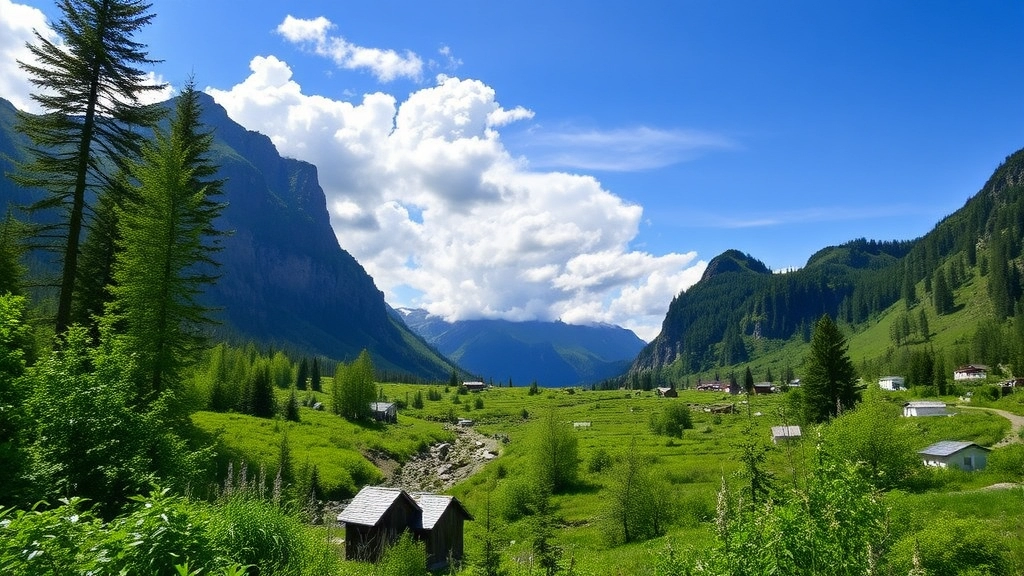
Worried about the environmental impact of your summer camp in a wooded area?
You’re not alone.
We all want to enjoy nature without wrecking it.
So, how do we pull this off?
First off, let’s talk about sustainable practices.
Sustainable Practices
- Leave No Trace: This is non-negotiable. Teach campers to leave the area as they found it.
- Recycling Stations: Have clear, easy-to-find recycling spots.
- Eco-friendly Supplies: Use biodegradable plates, cups, and utensils.
Energy and Water Conservation
- Solar Power: Invest in solar panels for energy needs. It’s an upfront cost, but it pays off.
- Water Management: Use rainwater harvesting and low-flow toilets and showers.
Wildlife Protection
- Respect Wildlife: No feeding animals. Keep a safe distance.
- Habitat Preservation: Don’t disturb natural habitats. Stick to marked trails.
Education and Awareness
- Workshops: Hold workshops about local flora and fauna.
- Interactive Games: Use games to teach kids about conservation.
Real-World Examples
Take Camp Green Woods.
They’ve nailed it with their eco-friendly initiatives.
Solar panels, composting toilets, and a strict no-plastic policy.
Campers love it, and parents appreciate the effort.
Conservation Partnerships
Partner with local conservation groups.
They can provide resources and expertise.
Plus, it shows you’re serious about making a difference.
Measuring Impact
Keep track of your efforts.
- Waste Reduction: Measure how much waste you divert from landfills.
- Energy Savings: Monitor your energy use before and after implementing solar panels.
Case Studies of Successful Wooded Area Summer Camps
Alright, let’s get real for a second:
You’re thinking about starting a summer camp in a wooded area, but you’re worried about whether it’ll actually work out. You want to know if it’s worth the effort and investment. Well, let me tell you, you’re not alone. Plenty of people have been in your shoes, and guess what? Some of them hit it out of the park. Let’s dive into a few case studies of successful wooded area summer camps to give you a clearer picture.
Camp Evergreen: A Family Favourite
What They Did Right:
- Location: Nestled in a dense forest near a freshwater lake, Camp Evergreen took full advantage of its natural surroundings.
- Activities: They offered a mix of traditional camp activities like canoeing and hiking, along with unique ones like tree climbing and forest yoga.
- Amenities: Think rustic cabins with modern amenities. They had solar-powered showers and composting toilets, keeping it eco-friendly.
- Community: They built a tight-knit community by hosting family weekends and alumni events.
Why It Worked:
- Target Audience: They knew their audienceâfamilies looking for a mix of adventure and comfort.
- Marketing: They leveraged social media and local partnerships to get the word out.
- Safety: A strong focus on safety protocols made parents feel at ease.
Forest Adventures Camp: All About the Thrill
What They Did Right:
- Location: Situated in a remote woodland area, far from the hustle and bustle.
- Activities: High-adrenaline activities like zip-lining, rock climbing, and night-time scavenger hunts.
- Instructors: They hired experienced guides and instructors, ensuring top-notch safety and skill-building.
- Eco-Friendly: They implemented a “leave no trace” policy, teaching kids about conservation.
Why It Worked:
- Niche Market: They targeted thrill-seekers and adventure enthusiasts.
- Word of Mouth: Happy campers spread the word, bringing in more adrenaline junkies.
- Partnerships: Collaborated with outdoor gear brands for sponsorships and discounts.
Woodland Retreat: Focus on Wellbeing
What They Did Right:
- Location: A serene forest area with plenty of open space for activities.
- Activities: Yoga, meditation, nature walks, and wellness workshops.
- Nutrition: They offered organic, locally-sourced meals.
- Holistic Approach: Focused on mental and physical wellbeing, appealing to both kids and adults.
Why It Worked:
- Unique Selling Point: They carved out a niche in the wellness market.
- High-Quality Staff: Hired certified wellness instructors and nutritionists.
- Community Engagement: Hosted workshops and events for the local community, building strong local ties.
Key Takeaways
What can we learn from these camps?
- Know Your Audience: Whether it’s families, thrill-seekers, or wellness enthusiasts, understanding your target market is crucial.
- Leverage Your Location: Use the natural beauty and resources of your wooded area to your advantage.
- Safety First: Always prioritise safety to gain the trust of parents and campers alike.
- Community Building: Foster a sense of community through events and alumni programs.
- Eco-Friendly Practices: Implement sustainable practices to appeal to environmentally conscious campers.
How to Market Your Wooded Area Summer Camp
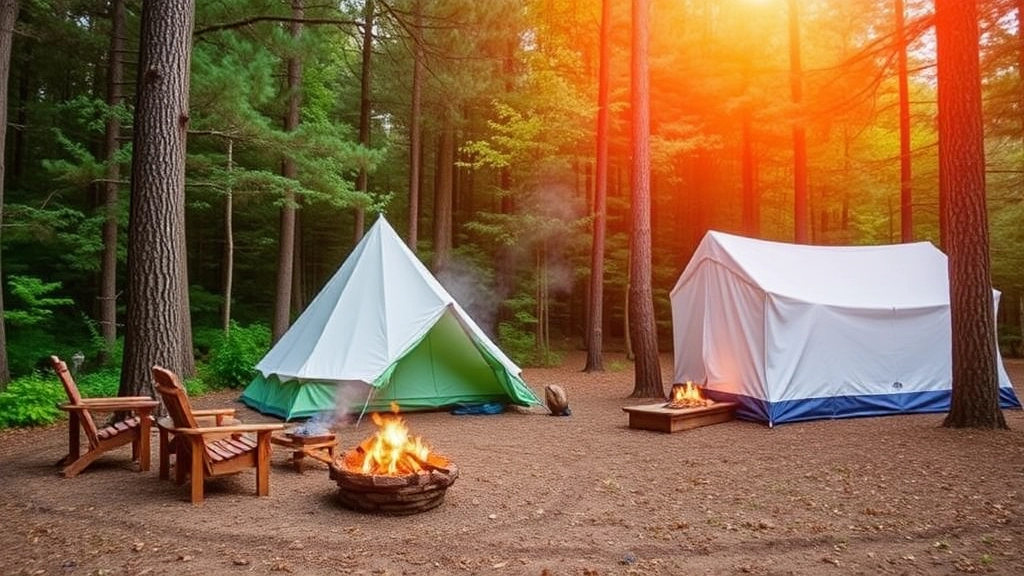
So, you’re running a summer camp in a wooded area. How do you get the word out? How do you attract campers and parents?
Here’s the deal:
Understand Your Audience
First off, who are you targeting?
- Parents looking for an enriching experience for their kids.
- Kids who want adventure and fun.
- Nature lovers who want to escape the city.
Create a Killer Website
Your website is your storefront. Make it count.
- Engaging visuals: Use high-quality images of the camp, activities, and happy campers.
- Easy navigation: Ensure parents can find info on activities, safety, and booking quickly.
- Testimonials: Display reviews from past campers and parents.
Leverage Social Media
Everyone’s on social media. You should be too.
- Facebook and Instagram: Post regularly about camp activities, staff, and behind-the-scenes.
- Videos: Short clips of camp life can be super engaging.
- Stories and Reels: Use these for quick, engaging updates.
Email Marketing
Don’t underestimate the power of a good email.
- Newsletters: Regular updates about camp activities, special offers, and upcoming events.
- Personalised emails: Send tailored messages to parents who have shown interest.
Use SEO and Content Marketing
Get found on Google.
- Blog posts: Write about the benefits of outdoor activities, how to prepare for camp, etc.
- Keywords: Use terms like “wooded area summer camp,” “outdoor adventure camp,” etc.
- Internal linking: Link your blog posts to your main camp pages.
Collaborate with Influencers
Influencers can give you a big boost.
- Parent bloggers: They can write about their experience with your camp.
- Local celebrities: A shoutout from them can drive a lot of traffic your way.
Host Open Days
Let people see what you’re all about.
- Tours: Offer guided tours of the camp.
- Sample activities: Let kids and parents try out some of the camp activities.
- Q&A sessions: Answer any questions parents might have.
Offer Early Bird Discounts
Everyone loves a good deal.
- Early booking discounts: Encourage parents to book early with discounts.
- Referral bonuses: Offer discounts to parents who refer friends.
Use Local Media
Get featured in local newspapers and magazines.
- Press releases: Send out press releases about your camp’s unique features.
- Local TV and radio: Appear on local shows to talk about your camp.
Engage with the Community
Be a part of the local community.
- Sponsor local events: Get your camp’s name out there.
- Community workshops: Host workshops on outdoor skills or nature conservation.
Budgeting and Funding for Wooded Area Summer Camps
Ever wondered how to budget for a summer camp in a wooded area without losing your mind? You’re not alone. Many camp organisers struggle with this, but it doesn’t have to be a nightmare. Let’s break it down together and make it as simple as possible.
Start with the Basics: What’s Your Budget?
First things first, you need to know your budget. Here’s how you can figure that out:
- Determine Your Initial Costs: This includes permits, insurance, and initial setup costs like cabins or tents.
- Estimate Recurring Costs: Think food, staff salaries, activities, and maintenance.
- Emergency Fund: Always have a buffer for unexpected expenses. Trust me, something will come up.
Funding Sources: Where’s the Money Coming From?
Okay, you’ve got your budget. Now, where do you get the money? Here are some tried and true methods:
- Grants: Many organisations offer grants for educational and outdoor activities. Do your homework and apply for as many as you can.
- Sponsorships: Local businesses often love to support community activities. Reach out and offer them advertising opportunities in return.
- Fundraisers: Host events like bake sales, car washes, or even an online crowdfunding campaign.
- Camper Fees: This is your main revenue source. Make sure your pricing is competitive but covers your costs.
Breaking Down Costs: Make It Manageable
Let’s chop this up into bite-sized pieces:
- Accommodation: Cabins, tents, and any other lodging. Don’t forget maintenance.
- Food: Daily meals, snacks, and any special dietary needs.
- Staff: Salaries, training, and uniforms.
- Activities: Equipment, instructors, and any special events.
- Utilities: Water, electricity, and waste management.
- Marketing: Website, social media, and promotional materials.
Real Talk: Stories and Examples
When we first started our camp, we underestimated the cost of food. We thought, “How much can kids eat?” A lot, it turns out. We had to scramble to adjust our budget mid-season. Lesson learned: Always overestimate your food budget.
Internal Linking: Dive Deeper
For more tips on managing staff and activities, check out our sections on Cabin Bunk Safety and Design Tips and Top Summer Camp Games and Activities.
Testimonials and Reviews from Campers and Parents
Thinking about sending your kids to a summer camp in a wooded area?
Wondering if it’s worth it?
Here’s the lowdown, straight from the folks who’ve been there.
First off, let’s talk about the campers.
Kids love the adventure.
They get to explore, make new friends, and learn new skills.
But don’t just take my word for it.
Here are some real testimonials:
“The Best Summer Ever!”
“My son came back with stories every day. From hiking to learning about different plants, he was never bored. He even learned how to start a campfire safely!” – Sarah, mum of an 11-year-old
“Made Friends for Life”
“My daughter was a bit shy before camp. But after a week in the woods, she made friends she still talks to every day. It’s amazing how much confidence she gained.” – Tom, dad of a 9-year-old
“A Break from Screens”
“In today’s world, it’s tough to get kids off their devices. The camp was a great break from screens. They were too busy having fun to even think about their phones!” – Emma, mum of two
Now, let’s hear from the parents.
They have their own set of worries, right?
Safety, cost, and whether the kids will actually enjoy it.
“Worth Every Penny”
“I was hesitant about the cost at first. But seeing my kid’s face light up every day was priceless. The skills and memories they gained are worth every penny.” – Mark, dad of a 10-year-old
“Peace of Mind”
“I was worried about safety. But the camp staff were top-notch. They had all the safety protocols in place, and I felt at ease knowing my child was in good hands.” – Lucy, mum of a 12-year-old
“Educational and Fun”
“It’s not just fun and games. The camp had educational activities too. My son learned a lot about nature and even some survival skills. It’s a win-win!” – Jack, dad of an 8-year-old
So, there you have it.
Real stories from real people.
If you’re on the fence about sending your kid to a wooded area summer camp, these testimonials should give you a clearer picture.
Still have questions?
Check out our other sections for more details on safety tips, essential amenities, and popular activities.
Ready to make a decision?
Your kid’s best summer ever might just be a click away. Explore our guide on finding the perfect camp duration to get started.
Keyword: Testimonials and Reviews from Campers and Parents
FAQs about Wooded Area Summer Camps
What are the benefits of hosting a summer camp in a wooded area?
Hosting a summer camp in a wooded area offers numerous benefits such as providing a natural playground for kids, fresh air, opportunities for learning survival skills, and mental health boosts. It also fosters community and real human connections.
What activities can kids do at a wooded area summer camp?
Kids can engage in a variety of activities including hiking, campfire stories, outdoor skills workshops, nature crafts, team sports, water activities, wildlife observation, scavenger hunts, star gazing, and quiet moments like reading under a tree.
How does a wooded area summer camp impact the environment?
While there can be environmental concerns, camps can adopt sustainable practices such as leaving no trace, using recycling stations, employing eco-friendly supplies, conserving energy and water, and protecting wildlife. Education and awareness about conservation can also be integrated into the camp activities.
What measures can be taken to ensure environmental sustainability at the camp?
Measures include implementing sustainable practices like using solar power, rainwater harvesting, and low-flow toilets. Camps should also focus on habitat preservation, respecting wildlife, and conducting workshops on local flora and fauna to educate campers.
How can I market my wooded area summer camp effectively?
Effective marketing strategies include understanding your audience, creating an engaging website, leveraging social media, using email marketing, optimizing for SEO, collaborating with influencers, hosting open days, offering early bird discounts, and engaging with local media and community.
What should be included on the camp’s website?
Your camp’s website should feature engaging visuals, easy navigation, and testimonials from past campers and parents. It should also provide detailed information on activities, safety, and booking procedures.
How can social media be used to promote the camp?
Social media platforms like Facebook and Instagram can be used to post regular updates about camp activities, share videos and behind-the-scenes content, and engage with your audience through stories and reels.
What are some effective email marketing strategies for a summer camp?
Effective email marketing strategies include sending regular newsletters with updates about camp activities, special offers, and upcoming events, as well as personalized emails to parents who have shown interest in the camp.
How can I collaborate with influencers to promote the camp?
You can collaborate with parent bloggers to write about their experiences with your camp, or get local celebrities to give a shoutout, which can drive significant traffic and interest to your camp.
What are some ways to engage with the local community?
Engaging with the local community can be done by sponsoring local events, hosting community workshops on outdoor skills or nature conservation, and participating in local media through press releases and appearances on local TV and radio shows.
How can early bird discounts help in attracting campers?
Offering early bird discounts can encourage parents to book early, and referral bonuses can incentivize them to refer friends, thereby increasing your camp’s enrollment and visibility.
References
-
Benefits of Camp: Why Camp?
-
Why Kids Need to Spend Time in Nature
-
Connecting Kids and Nature

